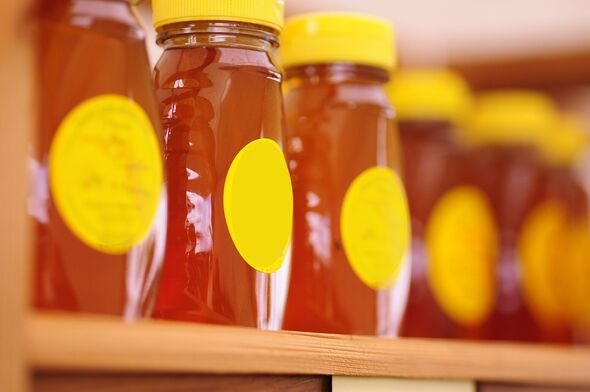
While honey is often praised as a natural superfood, not all honey is created equal — especially when it comes from major supermarkets. Many commercial brands undergo heavy processing, lose their health benefits, and may even contain hidden additives. Let’s break down the biggest issues:
1. 🧪 Heavily Processed Through Pasteurization
Most commercial honey is pasteurized, meaning it’s heated to high temperatures (often over 70°C / 160°F) to make it smoother and extend shelf life. However:
-
This heat destroys enzymes like diastase and invertase, which are crucial for digestion and antioxidant activity.
-
It reduces the natural antibacterial properties of raw honey — one of its most valuable health features.
-
Many of the phytonutrients and vitamins found in raw honey (like vitamin C and B-complex) are heat-sensitive and degrade during pasteurization.
In short, pasteurization makes honey look pretty in the jar — but robs it of what makes it healthy.
2. 🧴 Ultra-Filtration: Stripping Away Nature’s Fingerprint
To make honey even clearer and more “market-friendly,” many manufacturers use ultra-filtration — a process that removes particles, air bubbles, and most critically: pollen.
Why is this a problem?
-
Pollen is nature’s ID tag: It tells us where the honey came from and helps verify if it’s genuine.
-
Without pollen, honey can’t be traced to its floral or geographic origin — making it easier to mask low-quality imports or adulterated products.
-
The FDA and EU do not consider ultra-filtered honey as “real honey” in some contexts.
If your honey is crystal clear and never crystallizes, it’s likely been over-processed.
3. 🚫 May Contain Hidden Additives Like Glucose Syrup or High Fructose Corn Syrup
Cheaper honey, especially from non-EU imports or unregulated producers, is often cut with cheaper sweeteners to reduce costs and increase volume.
-
These can include glucose syrup, corn syrup, rice syrup, or sugar water.
-
Not only does this dilute the health benefits of honey, but it can spike your blood sugar much like refined sugar.
-
In 2011, a large study found that more than 75% of honey sold in U.S. grocery stores contained no traceable pollen — a potential red flag for adulteration.
Unless you’re buying from a trusted source, what you’re eating may be closer to sugar syrup than real honey.
4. 🏷️ Lack of Label Transparency and Misleading Marketing
Ever seen labels that say things like “Pure,” “Natural,” or “Healthy Honey Blend”? These terms aren’t regulated and can be highly misleading.
-
“Pure” honey can still be pasteurized and filtered.
-
“Natural” doesn’t mean unprocessed — it’s a vague marketing term.
-
“Honey Blend” almost always means it’s mixed with non-honey sugars or flavorings.
Also, many large honey brands source their product from multiple countries (e.g., “Product of EU and non-EU countries”) — making it almost impossible to know what you’re really getting.
5. 🧴 Plastic Packaging = Risk of Microplastic Contamination
Another often-overlooked problem with store-bought honey is how it’s packaged — especially in cheap plastic squeeze bottles commonly found in supermarkets.
Here’s why that matters:
-
Many low-cost honeys are stored in soft plastics, which can leach microplastics and chemicals (like BPA or phthalates) into the honey — especially when exposed to light, heat, or time.
-
Honey is acidic and hydrophilic, which makes it more likely to interact with packaging materials and absorb contaminants over time.
-
Studies have already detected microplastics in commercial honey samples around the world, likely from processing and packaging environments.
This is especially true when honey is:
-
Packaged warm (after pasteurization),
-
Shipped long distances in non-food-grade barrels or drums,
-
And stored in cheap plastics instead of glass.
🧠 Why it matters: While the microplastic dose from a single honey bottle is small, long-term exposure adds up — especially when combined with other plastic-wrapped foods in your diet.
✅ Healthier Alternative: Choose honey that is:
-
Packaged in glass jars (inert, safe, and non-reactive),
-
Stored in cool, dark environments,
-
Sold by small beekeepers or transparent local producers.
✅ How to Choose Real, Healthy Honey
To get the real benefits of honey, look for:
-
Raw (unheated)
-
Unfiltered
-
Crystallized (a good sign of purity)
-
Sourced locally or from a trusted single origin
-
Labeled with pollen content or floral origin
🐝 Final Thoughts
Honey is one of nature’s most powerful sweeteners — but only if it’s left close to the way the bees made it (Raw Organic Honey). Unfortunately, most store-bought honey is processed for shelf appeal, not nutrition. Knowing what to look for (and avoid) can make a big difference in your health!
